Are you wondering how to tell if your cat is happy? Cat behavior hides many signs that can help you find the answer. When we observe our cat and its daily behavior, we can determine how often the cat purrs, wants to cuddle, talks to us, shows interest in playing, rubs against our legs or other parts of the body, or simply enjoys lying on its back with all its paws in the air. In today's post, we will analyze some key signs that confirm your cat's contentment.
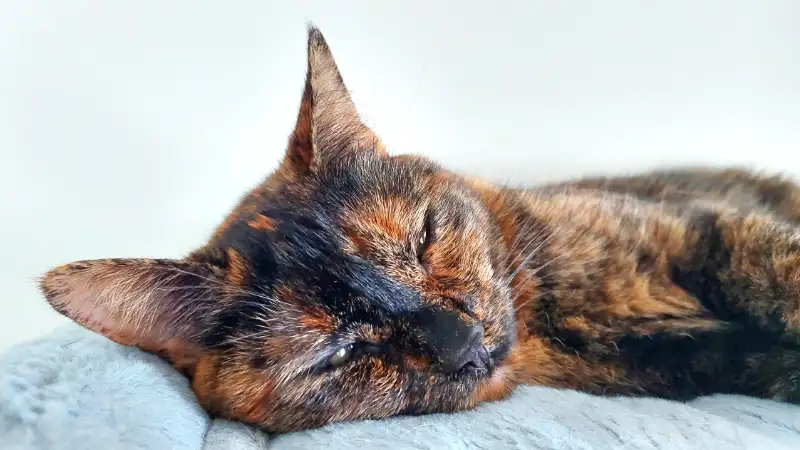
Purring
Purring is the most recognizable characteristic of cats. It has a pleasant sound that cats create with vibrations in their throat while breathing. They most often purr due to pleasure and happiness, but they can also do so due to certain health problems, stress relief, or pain, so it is important to observe other signs of body language as well. Some cats also purr when they want your attention, and they combine this with rubbing around your legs. Cat purring has a therapeutic effect on people, as it calms and relaxes and helps in reducing stress and anxiety.
Did you know that kittens purr after just a few days of age?
Desire to cuddle
Every cat has its own unique desires and needs. Some frequently seek human attention and closeness, while others value their peace and only want their owner's attention occasionally. A cat with a raised or slightly twitching tail shows that it is in a good mood and wants your attention, as do gentle blinking and making eye contact. The most obvious feline gesture is rubbing against your legs, with which the cat wants to attract your attention and at the same time mark you with its scent. When a cat wants even more attention, it will come into your lap and want to cuddle. Often, the cat will start kneading with its paws, showing its contentment in this way. This habit originates from the time of suckling its mother's milk, when kittens knead their mother's belly, stimulating milk flow.
It is also important to recognize signs when a cat does not want attention, such as fast tail swishing, moving away, and warning with hissing or meowing. Some are more independent and desire less closeness, or they have had bad experiences with people.
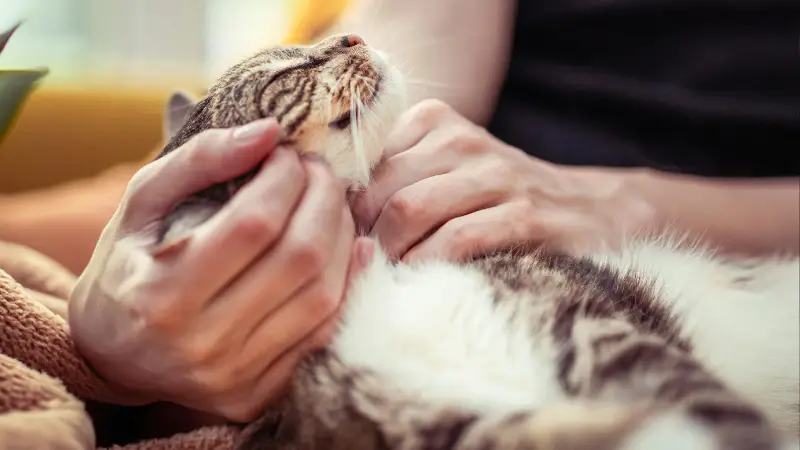
Relaxed gameplay
Playing contributes to the physical, mental, and emotional health of cats. It is a form of entertainment, as well as a way to develop and strengthen hunting instincts, explore the environment, and strengthen the bond with the owner. Cats simply enjoy stalking and chasing prey, and jumping. We often observe a cat suddenly starting to dash around the apartment and jump on various pieces of furniture. During play, they use their claws and teeth, especially when playing with cat toys. It is important to teach the cat which objects are suitable for their play and which are not, so that there is no unwanted destruction of furniture in the apartment or even biting the owner. We regularly play with her using toys intended for her, such as small balls, plush mice, play wands, string toys, catnip-filled toys, and we often scratch the scratching post, etc. When several cats live in the apartment, a relationship usually develops between them that includes mutual play, and sometimes gentle biting.
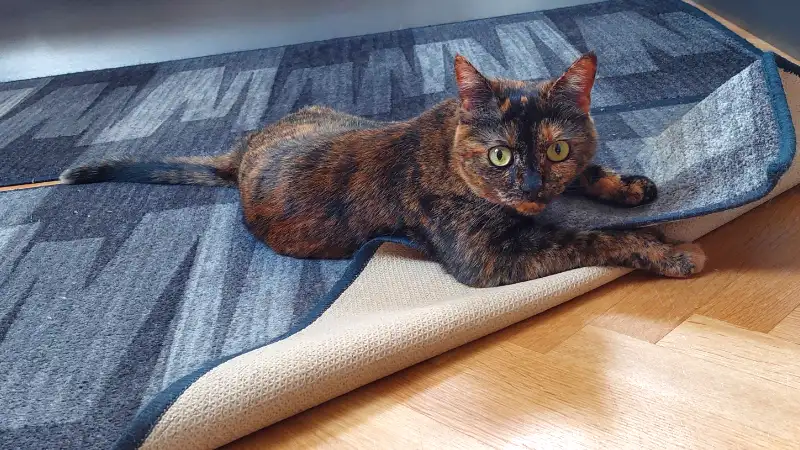
Talking to the owner
Every cat develops its own unique way of talking to its owner. Although they do not communicate in the same way as humans, they use body language, forms of behavior, and various sounds to express their desires. The most common communication is meowing, which can have different meanings, such as a request for attention, a desire for food or treats, a wish to go outside, a warning about a change, an expression of dissatisfaction, or pleading for an unmet desire. When a cat is frightened, feels threatened, or is in pain, it can also express its feelings with growling, hissing, or yowling. The frequency of meowing depends on the breed of the cat or its character. The most persistent ones follow their owner at every step, enjoy company, and "talk" a lot.
Did you know that cats don't meow to each other, but only do it to communicate with humans?
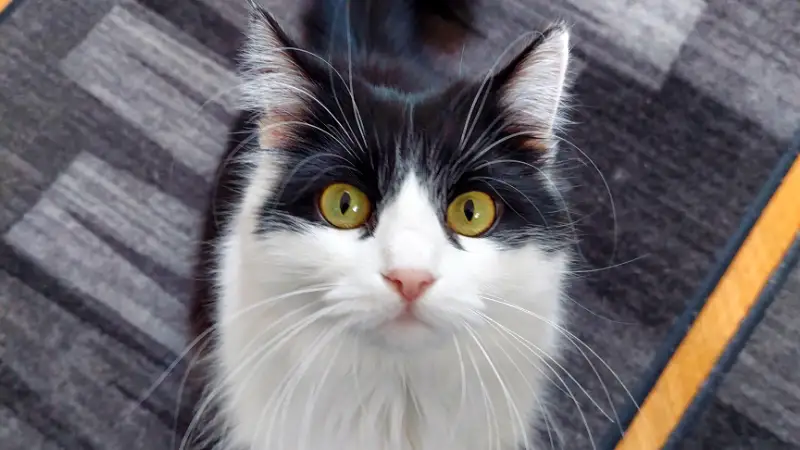
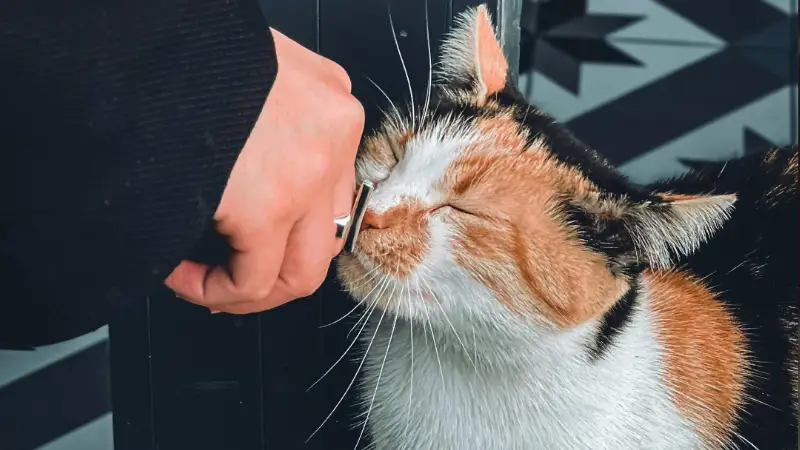
Rubbing against the owner
With this, cats show their love and affection. We can talk about body language with which the cat marks its territory and at the same time strengthens the bond with its owner. Very often, upon your return home, the cat will come to you and rub against your legs, as if it wants to greet you and attract your attention. Rubbing can also be a result of stress, as the release of pheromones increases the feeling of security in the current environment. Usually, by rubbing, the cat attracts attention and is rewarded with petting and talking. Also pay attention to other signs of body language; perhaps your cat wants to lure you near the food bowl or the front door.
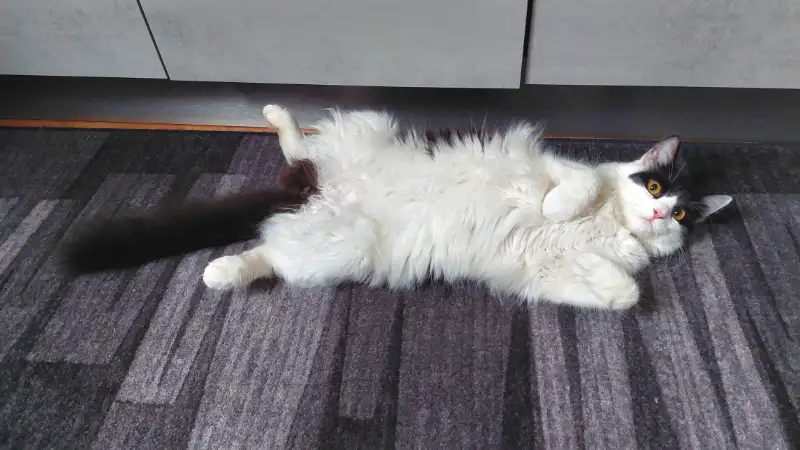
Lying on its back
Lying on its back and showing its belly is almost certainly a sign that your cat completely trusts you, as the belly is one of the most vulnerable parts of its body. However, this does not mean it wants a belly rub. Some cats become quite displeased by this, using their claws and teeth, while others occasionally allow gentle petting. Lying on the back can also mean showing a desire to play or just a sweet way for the cat to get your attention.
With its behavior, your cat shows you whether it is happy. Recognize the signs and provide it with even more comfort in the safe haven of your home with products from our sales program: www.catwall.eu/shop.
Photos:
- CatWall personal archive
- https://www.pexels.com/